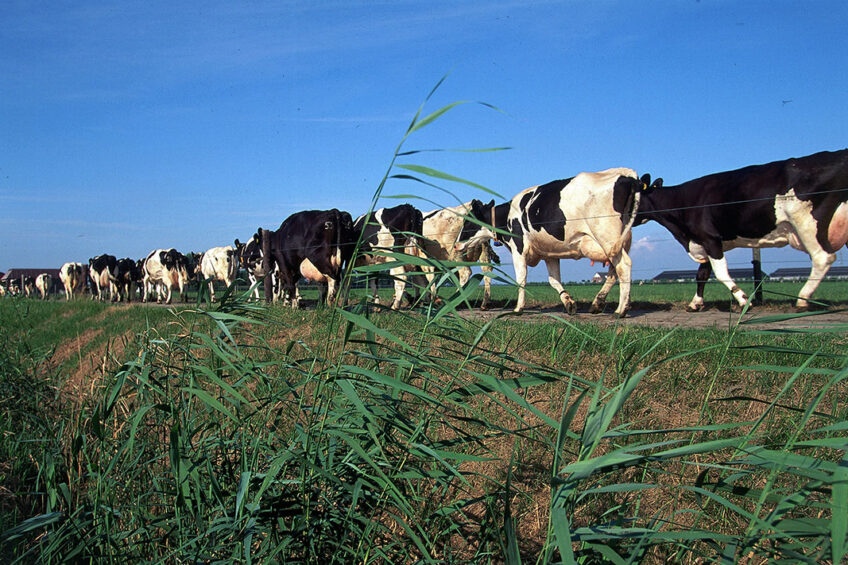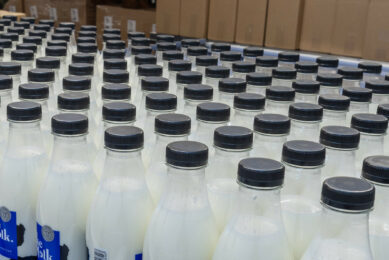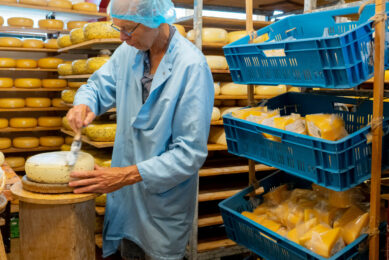Why is labour such an issue in Eastern Europe?

Ongoing urbanisation coupled with migration and an ageing population is impacting raw milk production in some parts of Eastern Europe, especially in the backyard segment.
The trend of young staff not wanting to stay and work on farms is not new, nor is it a challenge particular to Eastern Europe. However, demographics could play an increasingly important role in the raw milk industry in this region, in the context of the global labour crisis in the Covid-19 pandemic.
Private farms in the spotlight
The share of backyard farms varies drastically in the post-Soviet region and Eastern Europe. The Eurasia Economic Commission estimated that this segment accounted for 99% of milk production in Armenia, 80% in Kazakhstan, 51% in Kyrgyzstan, and 46% in Russia.
In Russia, backyard farmers produce roughly 12-13 million tonnes of raw milk per year, even though the exact figure remains unknown.
“Our approach is to take a census [among backyard farmers] once every decade and, based on its results, update the statistical information,” says Elena Farsova, deputy Russian agricultural minister, adding that the last census was taken in 2016 when backyard farms reported about 13.5 million tonnes of raw milk produced in that year, which was lower than expected.
”…farms with fewer than 20 cows jointly produce roughly a third of the milk in the country.”
“In the end, we discovered that backyard farms have cut production of raw milk, plus a significant drop was seen in potatoes and vegetables,” Farsova says. In the eastern part of the European Union, private farms also tend to dominate the dairy industry.
For example, in Poland, dairy cows are also kept mainly on individual farms – about 95% of the national population of these animals are kept this way. Despite the consolidation processes over the past few years, farms with fewer than 20 cows jointly produce roughly a third of the milk in the country. However, the share of individual farms run by a single family has dropped during the past few years.
Dropping production
Production in the backyard segment in most countries in Eastern Europe has decreased in the past 2 decades. In Russia, the number has dropped faster than the authorities are ready to admit.
Research conducted by the Russian Centre for Milk Market Studies suggested that some Russian regions exaggerate production in the backyard segment in a bid to show positive production dynamics to the federal authorities. For example, in Zabaikalsky Krai – a small region in Russia’s Far East – in 2016 the production in the backyard segment was claimed to be 316,300 tonnes. This means that the region’s per capita production is 898 kg, which is the world’s highest figure. In comparison, in the Netherlands, it stood at 751 kg per capita, researchers estimated.
This is also a typical picture for the post-Soviet region. For example, the Ukraine State Statistical Service estimated that the country’s milk production in 2020 amounted to about 9.2 million tonnes, including 2.75 million tonnes in the industrial segment and 6.5 million tonnes in the backyard segment.
Vadim Chagarovsky, director of the Union of Dairy Enterprises of Ukraine, argued that actual production ranged between 6.5 and 7 million tonnes. Again, the figures for the backyard production seem too high; in reality, it may be lower by a few million tonnes. Falling domestic production is being rapidly replaced by growing import supplies, Chagarovsky claimed.
Immigration a factor
In contrast, 94% of milk production in Belarus comes from industrial farms. Unlike most other former communist countries, Belarus resisted privatisation efforts to retain centralised control politically and economically. This helped Belarus become the world’s largest milk producer per capita, with backyard farms playing a role of moderate importance.
However, the Belarussian dairy industry is reportedly also no stranger to a labour crisis. Anatoly Nasenya, a member of the National Assembly of the Republic of Belarus, said that the country experienced a labour force shortage, as the number of vacancies in 2021 rose to 74,000, while the unemployment rate hit a record low of 0.2%. Nasenya added that Belarussian farmers’ need for labour could be met by attracting foreigners.
To some extent, the problems of the Belarussian labour market could be associated with migration. Following the 2020 political crisis in the country, several European countries introduced employment programmes for Belarussian citizens.
The prime minister of Belarus, Roman Golovchenko, speaking during a meeting with the Parliament last year on 2 December, said that it was time to change the migration legislation, adding that the country needed to put “significant efforts into reducing the outflow of the population, primarily young people, making external migration returnable and preventing the so-called brain drain”.
Next generation of farmers
Despite its large production performance, the backyard segment in the region is predicted to gradually die out in the coming years. The reasons are not entirely economic.
Research conducted by the Russian agricultural bank Rosselkhozbank showed that the average age of a typical Russian farmer ranges between 50 and 55 years. With the average life expectancy of men in the country standing at 66.5 years, the next generation is anticipated to take the reins of the businesses in the coming decade.
However, this is not likely to happen, firstly because of the low prestige of jobs in rural areas, and secondly due to a “demographic pit” observed during the great national depression of the 1990s, which narrowed the number of millennials in Russia.
For instance, the Russian Academy of Science projected the working-age population in Russia to shrink by 7 million by 2030. The demographic pit is not confined only to Russia, as it is also seen in other former communist states: Bulgaria, Romania, Serbia and Ukraine.
In Poland, the average age of a farmer is 56 years, Statistics Poland estimated. Every ninth farmer is older than 65 years, while two-thirds of all workers employed at Polish farms are older than 44. However, the issue is not as pressing as in the post-Soviet states because of the better life expectancy, which is 74.1 years.
The shares of the elderly farmers were some of the highest in some Eastern European states, including 70.3% in Bulgaria and 67.5% in Romania. However, again thanks to better life expectancy, this problem will not affect milk production in the region in the near future but may well in the long run.
Join 13,000+ subscribers
Subscribe to our newsletter to stay updated about all the need-to-know content in the dairy sector, two times a week.










